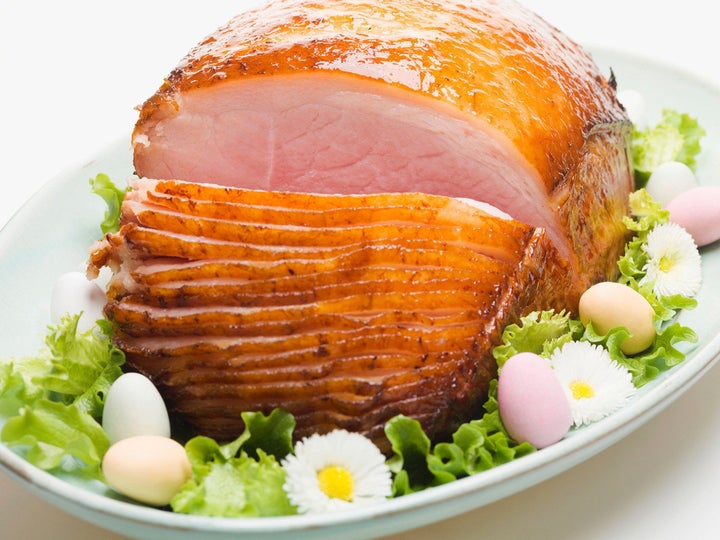
Have you ever wondered what makes ham pink? Whether you buy a ham with or without the bone, the kind pressed into a tight cylindrical form, or a spiral-cut ham, all the hams that we buy in the supermarket have been cured and cooked (or partially cooked) -- and that's why they're pink. But what is curing?
If you've ever had bacon, sausage, prosciutto, country ham or corner beef, then you've had cured meats before. Curing is a form of preservation that's been around since the cavemen. Traditional curing involves salting meat to remove its moisture content, and then drying it for months. Prosciutto and country ham are the best examples of this process, which results in very dry, almost "mummified" ham.
But the curing process for our supermarket hams (also called "city ham") is quite different. Instead of salt drying out the ham, the ham is brined (basically infused) with a salt-water solution. These hams retain much more moisture content than dry-cured versions, often more moisture than the original raw meat. But what's the same in both of these methods is the presence of sodium nitrite (or less commonly sodium nitrate). It inhibits bacterial growth (the extremely dangerous kind that can cause botulism), ensuring the meat is safe to eat, and also causes the meat to retain a pinkish color similar to its raw state. The nitrite is also what gives ham a tender texture from the breakdown of protein molecules and contributes a characteristic flavor that's much different that eating regular pork.
Do you love ham? Leave a comment below.
WATCH: Alton Brown Explains Ham